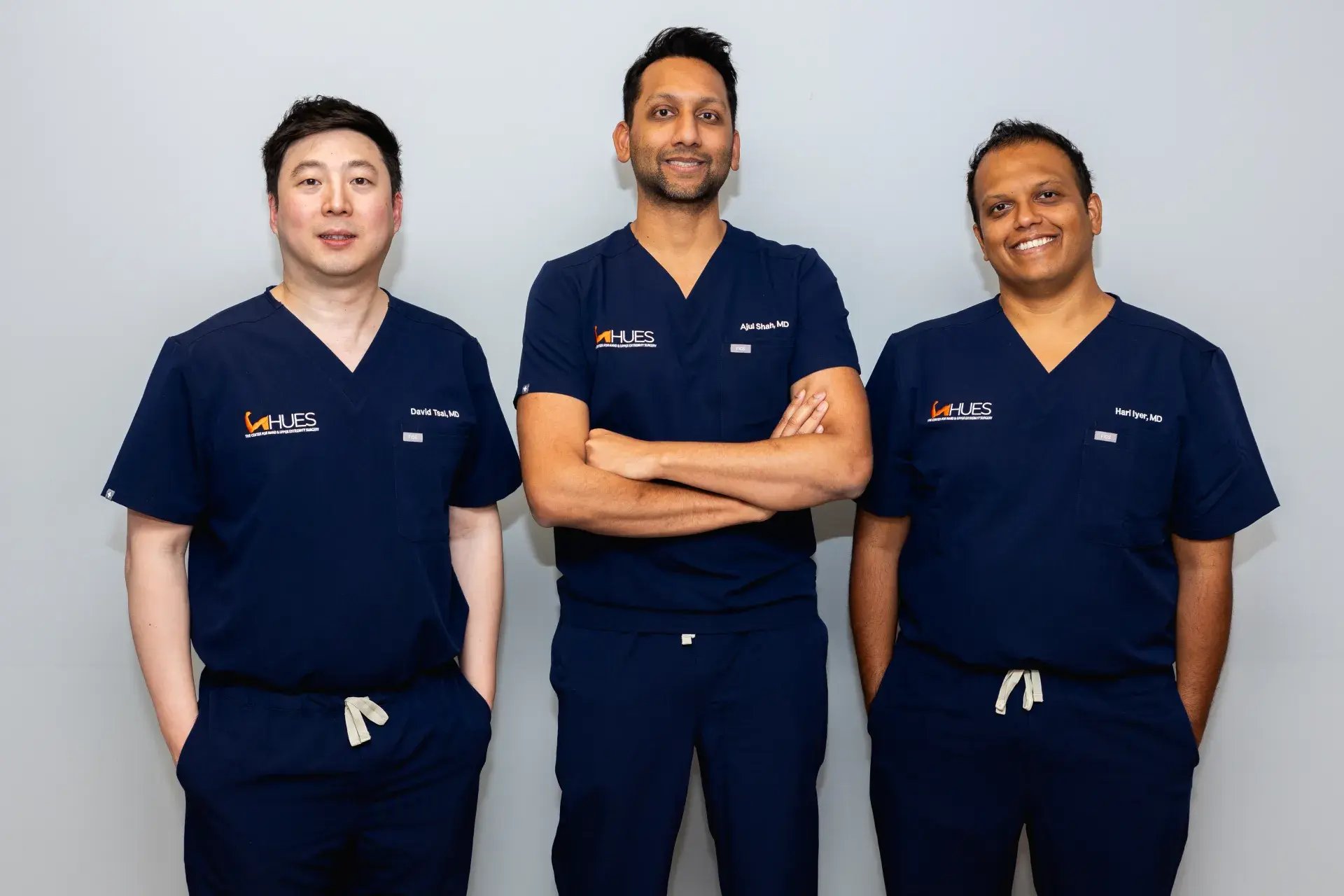Tendons are rope-like structures that originate in muscle tissue and help to move different parts of the body, such as your fingers, hand, and wrist. Tennis elbow (also referred to as or lateral epicondylitis) is a painful condition characterized by pain and tenderness on the outer part of the elbow due to overuse or repetitive strain of the forearm muscles and tendons – often exacerbated by gripping or lifting. It's a fairly common condition, affecting around 1-3% of the population, predominantly those between 30 to 50 years old. While it's not typically progressive in nature, without treatment, symptoms can worsen, leading to persistent discomfort, limited arm movement, and challenges in performing everyday activities involving the affected arm.
Tennis Elbow
(Lateral Epicondylitis)
Denervation Surgery for Tennis Elbow
Denervation surgery is an alternative approach to manage pain in conditions like tennis elbow when other treatments haven't provided relief. This procedure involves identifying and surgically removing or disabling affected nerves in the elbow joint which are causing pain and inflammation. This minimally invasive procedure stops pain signals from being sent to the brain. During the surgery, a tiny camera is inserted to visualize the elbow joint, and small instruments are used to cut or remove the problem nerves. The procedure is done under general anesthesia or a nerve block, and patients can go home the same day.
The goal of denervation surgery is to provide long-term pain relief and improved motion without some of the lengthier recovery times of other elbow surgeries. While rehabilitation exercises may still be recommended after surgery, pain relief can allow patients to more easily regain strength and function. Denervation surgery has shown to be effective in reducing discomfort for those not finding relief from other conservative treatment approaches like rest, braces, medication, physical therapy or injections.
Additional Treatment Options
The primary goal of treating tennis elbow is to alleviate pain, promote healing, and restore function in the affected arm. Non-surgical approaches for tennis elbow aim to reduce pain and inflammation while promoting healing. Surgical options for tennis elbow are generally outpatient procedures aiming to repair or remove damaged tissue, alleviate pain, and improve function in the affected arm. These procedures are considered when non-surgical treatments fail to provide relief.
Non-Surgical Treatments
Medication
Over-the-counter pain relievers like ibuprofen or naproxen to manage pain and reduce inflammation.
Lifestyle Changes
Rest, avoiding repetitive motions that aggravate the condition, using proper ergonomic techniques during activities, and modifying gripping techniques.
Physical Therapy
Exercises targeting forearm strength and flexibility, along with techniques to improve tendon healing.
Bracing or Strapping
Using braces or straps to reduce stress on the affected tendon.
Injections
Corticosteroid injections to alleviate inflammation and provide short-term pain relief.
Platelet-Rich Plasma (PRP) Therapy
Using a concentration of the patient's own platelets to promote healing in the affected tendon.
Surgical Treatments
Tennis Elbow Release Surgery
This outpatient procedure involves removing damaged tendon tissue and releasing tension on the extensor tendon to alleviate pain, restore function, and promote healing in the affected tendon.
Contact Us Today
Why Patients Trust the Center for Hand & Upper Extremity Surgery
Our state-of-the-art surgical center is a leading destination for specialized expertise in complex tendon and nerve surgeries. All of our surgeons are fellowship-trained hand and upper extremity experts with years of focused training in tendon- and nerve-related procedures. Patients gain access to the most advanced diagnostics and treatments in a more private environment that ensures the highest standards for safety, quality, and continuity of care.
When to Seek Medical Attention
If you experience persistent elbow pain, difficulty gripping or lifting objects, swelling around the elbow, or if your symptoms hinder daily activities, it’s time to see a medical professional. If the pain intensifies, spreads down the forearm, or if conservative treatments don't provide relief, consult a specialist for evaluation and personalized care to prevent potential worsening of the condition.
Frequently Asked Questions
Repetitive motions such as gripping, lifting, or using tools like racquets or hammers can contribute to tennis elbow.
Yes, tennis elbow can affect anyone engaging in activities that involve repetitive wrist and arm motions, not just tennis players.
Recovery time varies, but with conservative treatments like rest, therapy, and medication, improvement can be seen but generally takes several months.
A corticosteroid injection involves injecting medication into the affected area to reduce inflammation and alleviate pain. You might experience temporary relief that could last for several weeks to months.
Recurrence is possible, especially if the activities causing the condition persist or if rehabilitation and lifestyle modifications are not followed.
Surgery is considered when conservative treatments fail. Traditionally, it's not the first line of treatment and is usually recommended after other options have been exhausted. However, newer minimally invasive surgical treatments such as denervation may be employed as a first line treatment, depending on your condition.
Returning to activities varies based on the extent of the surgery. Light activities might resume after a few weeks, while full recovery for strenuous tasks may take longer.
Strengthening forearm muscles and using proper techniques during activities can help prevent tennis elbow. Your healthcare provider or therapist can recommend specific exercises.
Yes, tennis elbow can occur in both arms, particularly if both arms are exposed to repetitive stress or strain.
Wearing a brace or strap around the forearm can help reduce strain on the affected tendon and provide some relief by supporting the area during activities.



